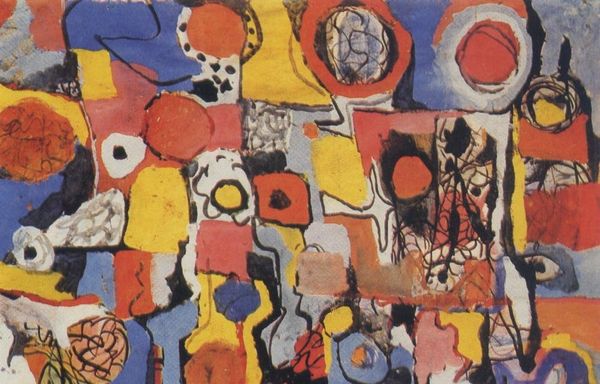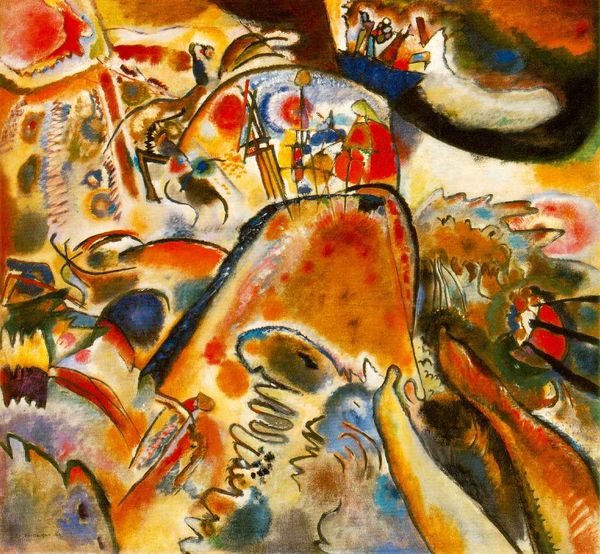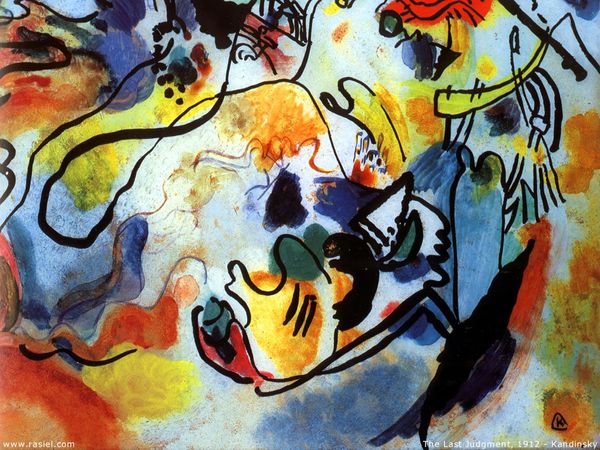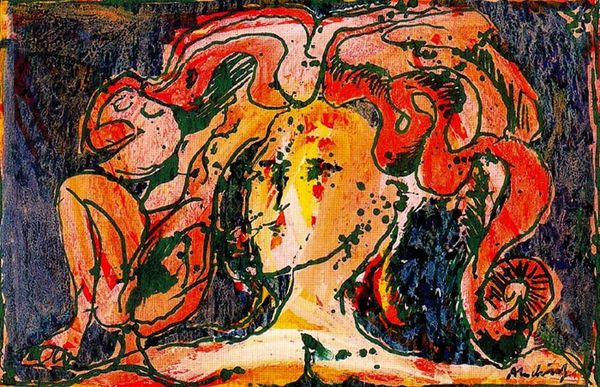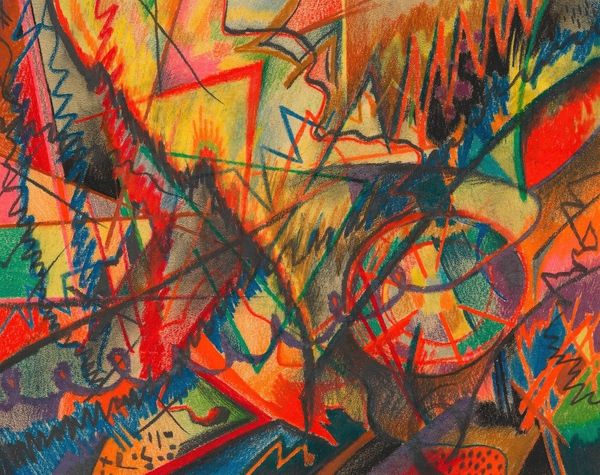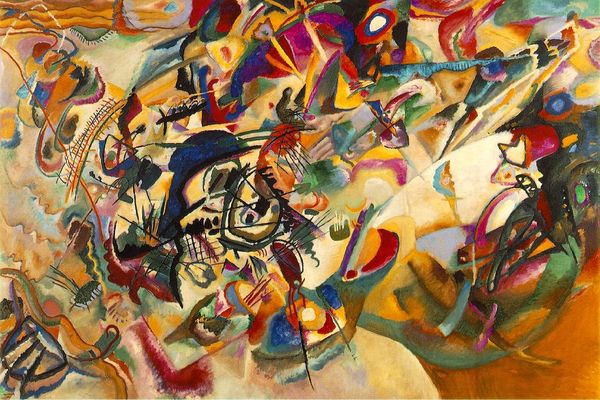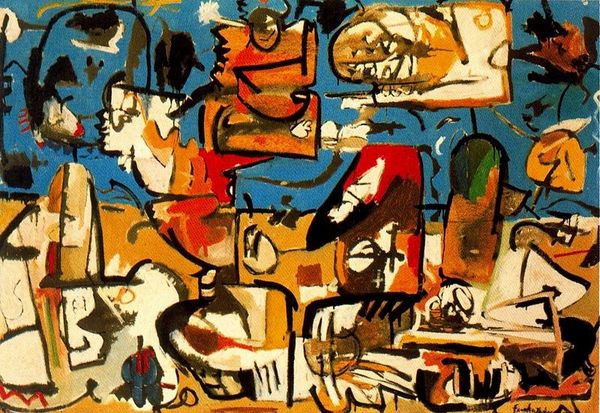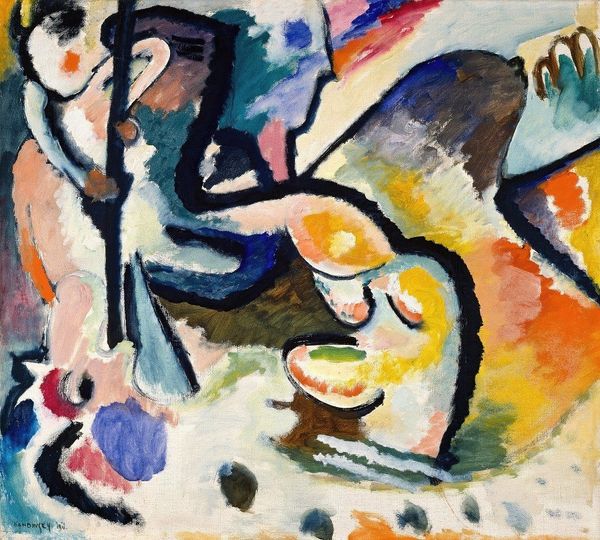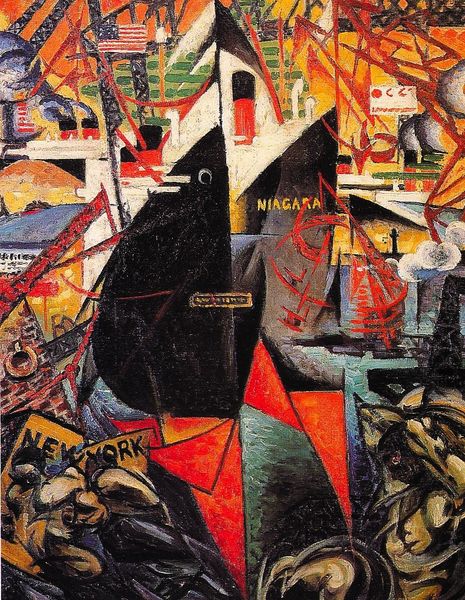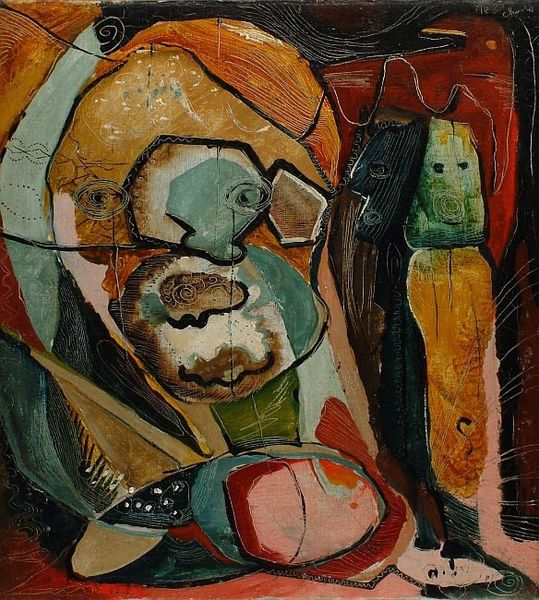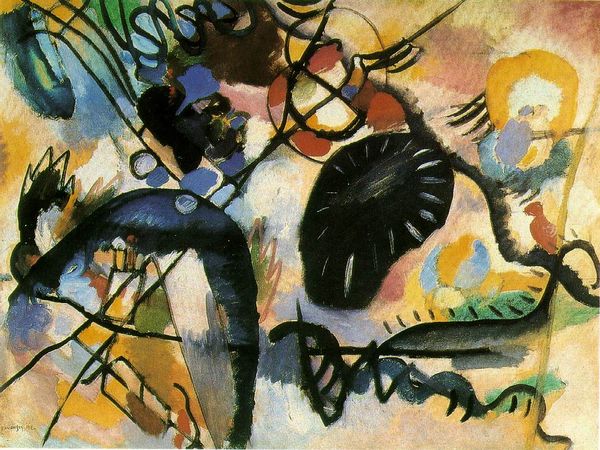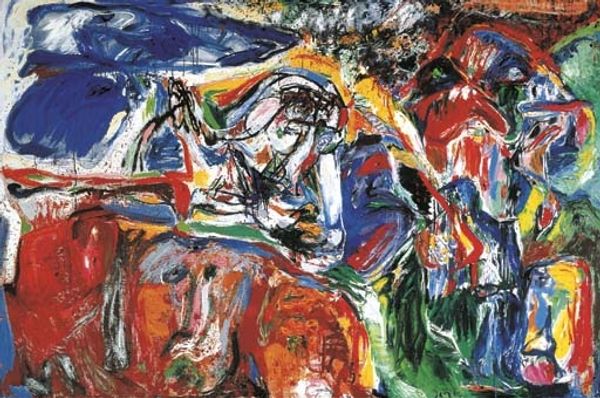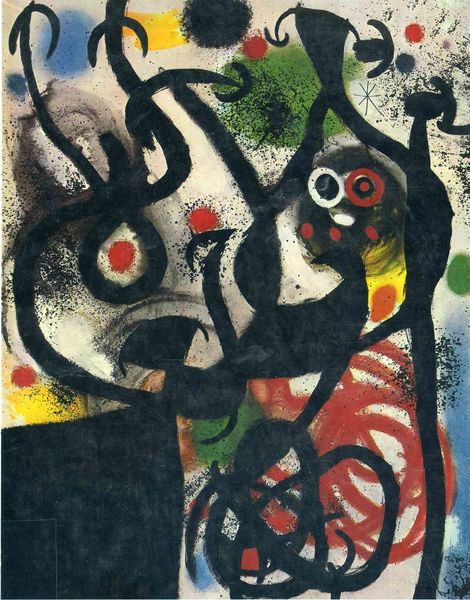
painting
#
portrait
#
abstract expressionism
#
painting
#
german-expressionism
#
figuration
#
expressionism
#
abstraction
#
painting art
#
expressionist
Copyright: Albert Bloch,Fair Use
Curator: Let’s turn our attention to Albert Bloch’s intriguing piece, "For Clown IV." The painting aligns with the German Expressionist movement. Bloch, an American artist working in Europe, explores figuration and abstraction within this style. Editor: Woah, chaos! That's the first thing that jumps out. It feels like all the colors had a massive party and no one cleaned up afterwards. But a party where maybe there was too much crying in the clown punch bowl? Curator: That captures a layer of it, doesn't it? Bloch was deeply engaged with the social critiques prevalent in German Expressionism. Think about the context. Many artists like Bloch used the circus and clown figures to mirror societal anxieties and question authority in the years leading up to World War I. Editor: Ah, so the party is maybe…society teetering on the edge? The clown being a tragic figure rather than a happy-go-lucky one? I can dig that. Looking closer, it is actually quite masterful. It's not just random paint splatters. I see faces, masks, lurking eyes. Makes me wonder what masks *we* all wear every day, doesn’t it? Curator: Indeed. The abstracted forms, while jarring, reveal the psychological unease so common in that era. He hints at portraiture without ever fully committing. He’s also considered one of the few American artists directly involved in the circle of the Blue Rider group. This background places his work in a wider historical narrative of cultural exchange and artistic innovation. Editor: It is a bold visual statement; like a scream trapped in a kaleidoscope. Though I have to ask: Is it "good?" Is that even the right question? Perhaps its value comes from how honestly it conveys raw emotion, even if it leaves you a little disoriented. Curator: Precisely! “Good” isn’t the aim. Instead, it functions as social commentary. It reflects a time of rapid change, unrest, and questioning – qualities that gave rise to Expressionism in the first place. It pushes viewers to confront uncomfortable truths. Editor: I leave strangely energized. It is a bit like looking into a mirror at a very messy, truthful version of myself. Thanks, Bloch! Curator: A potent encapsulation indeed. It serves as a stark reminder how artistic expressions reflects on human anxieties of that time, and to some degree continues to resonate even today.
Comments
No comments
Be the first to comment and join the conversation on the ultimate creative platform.
